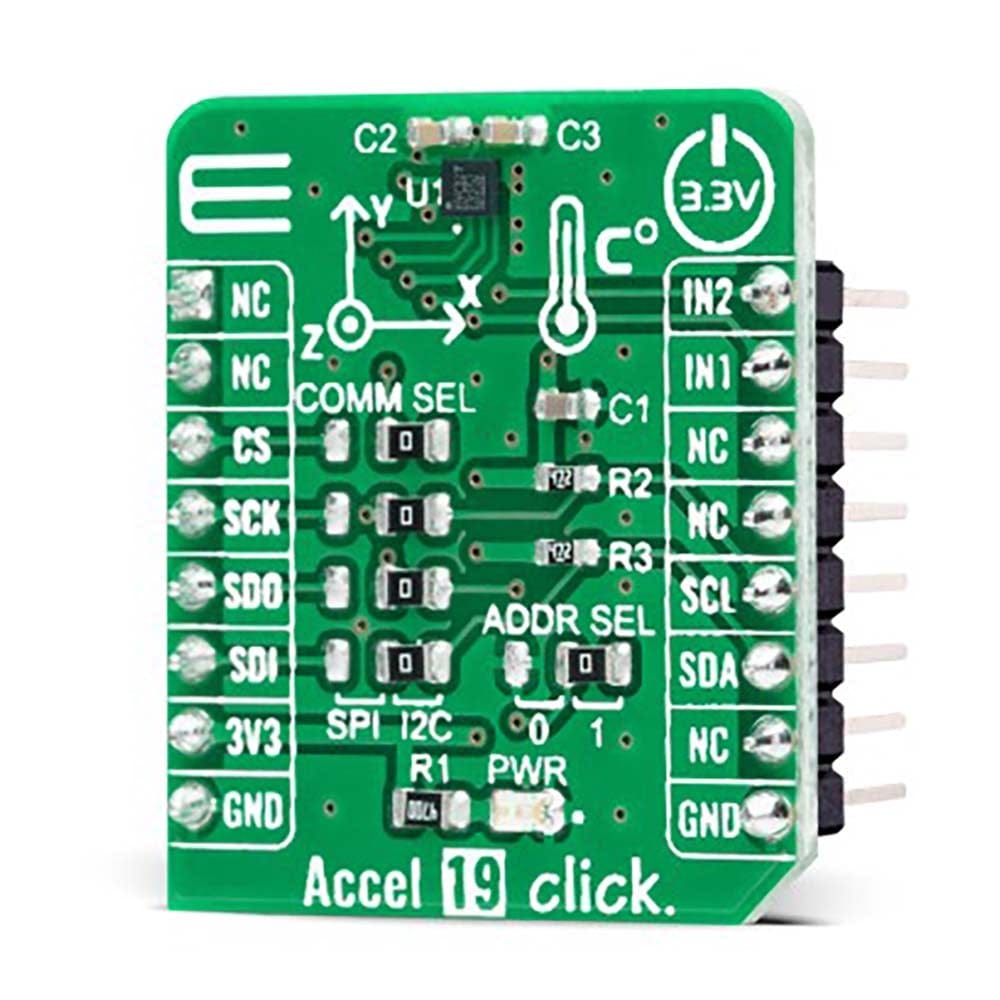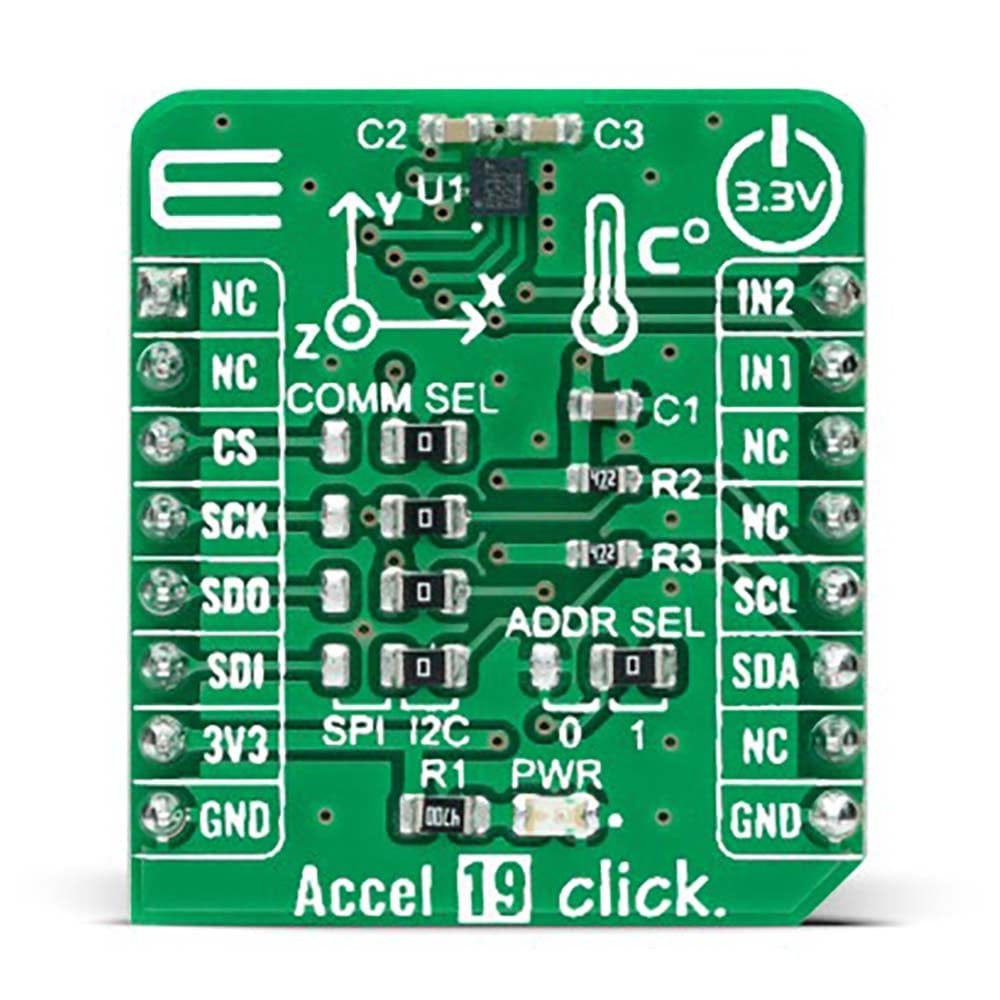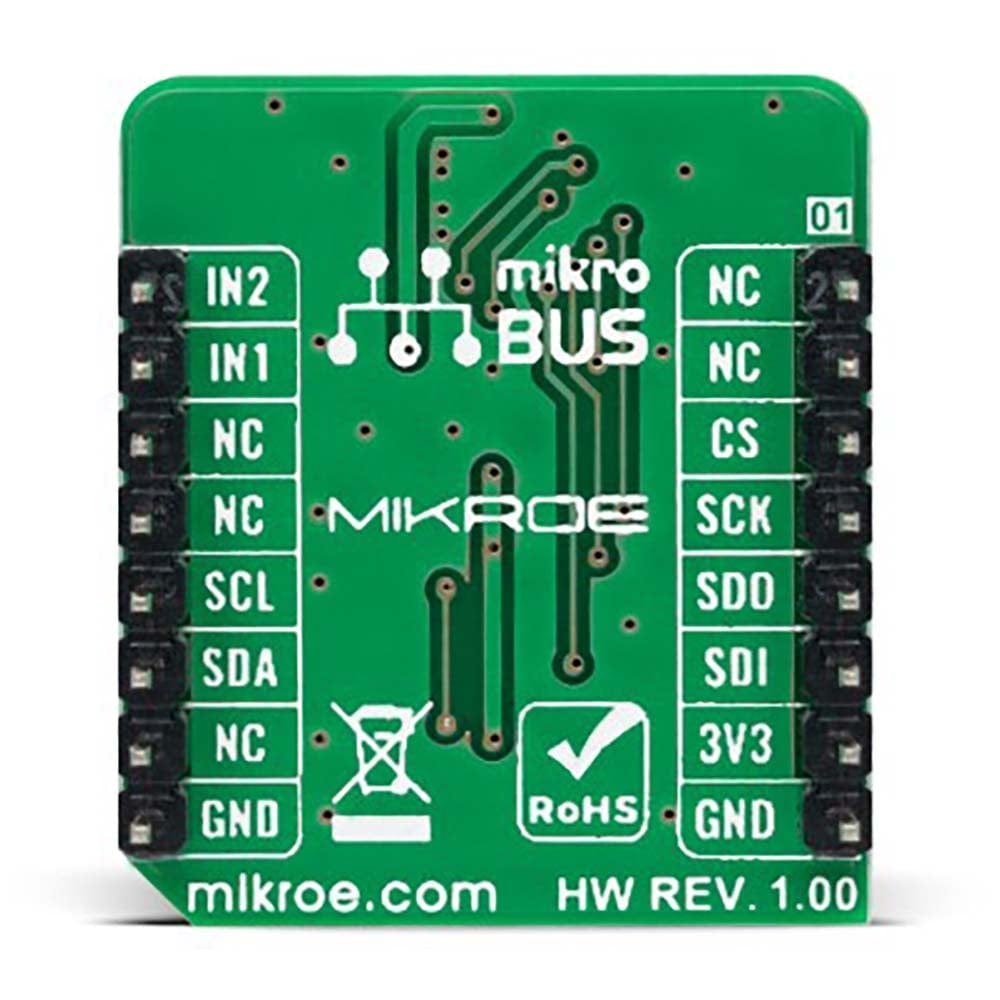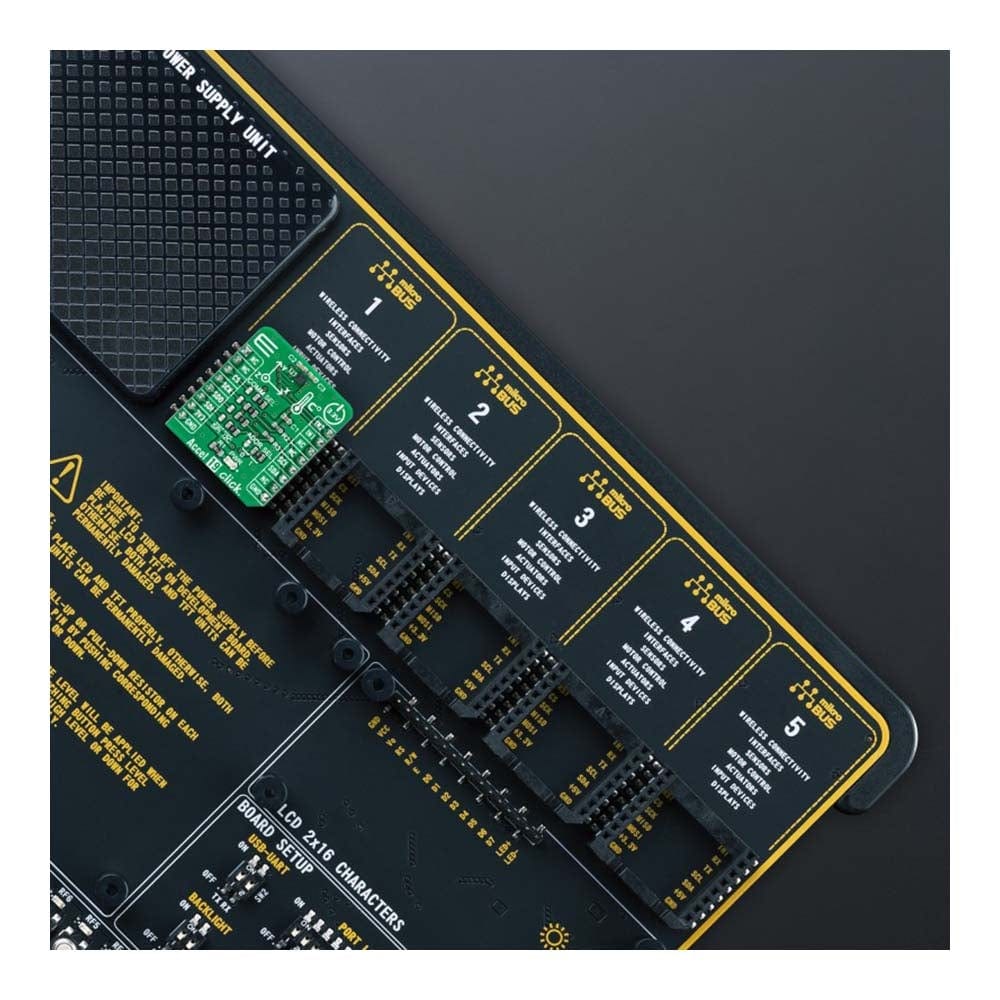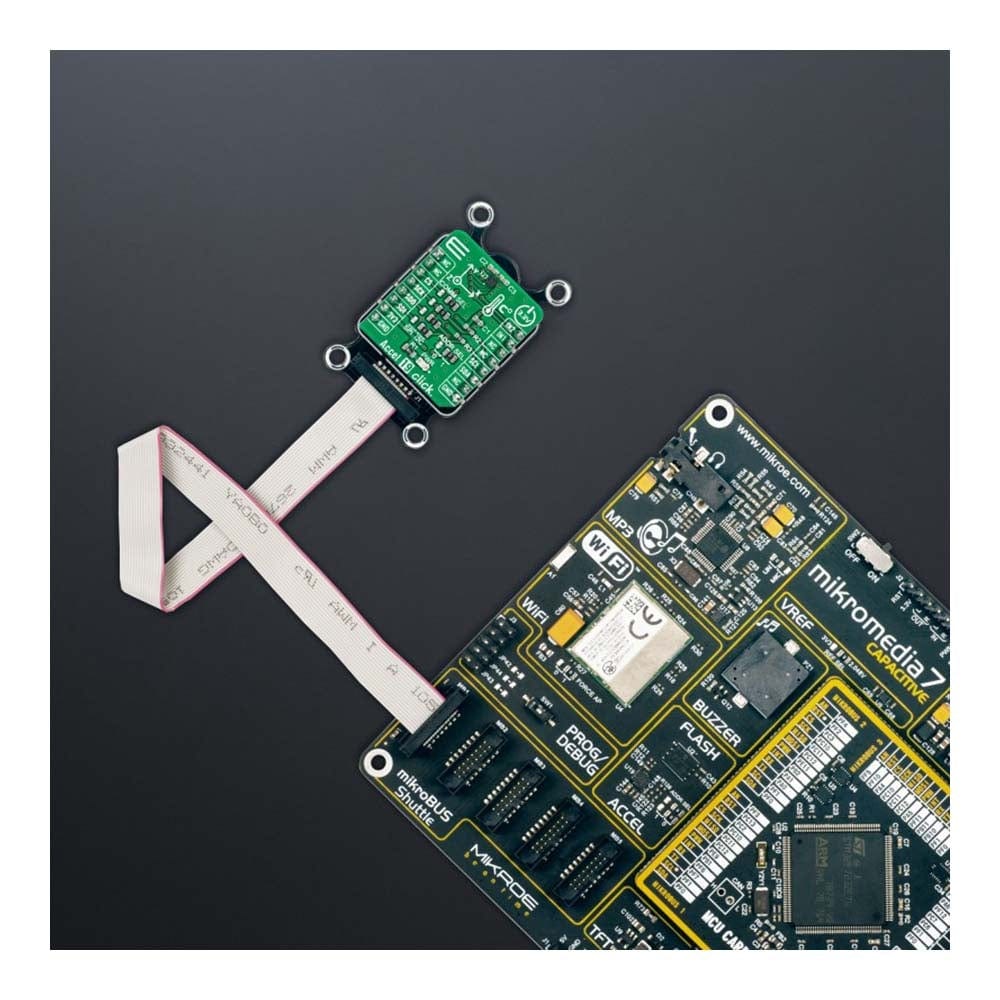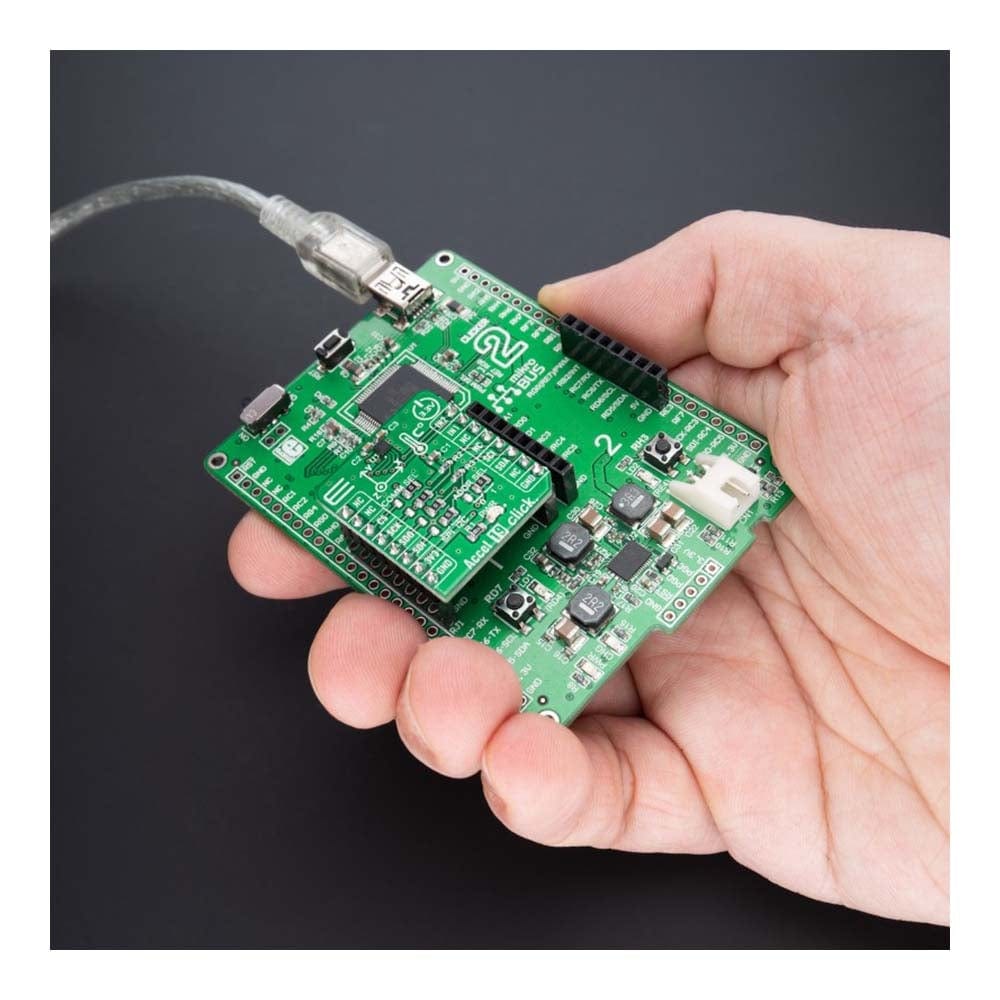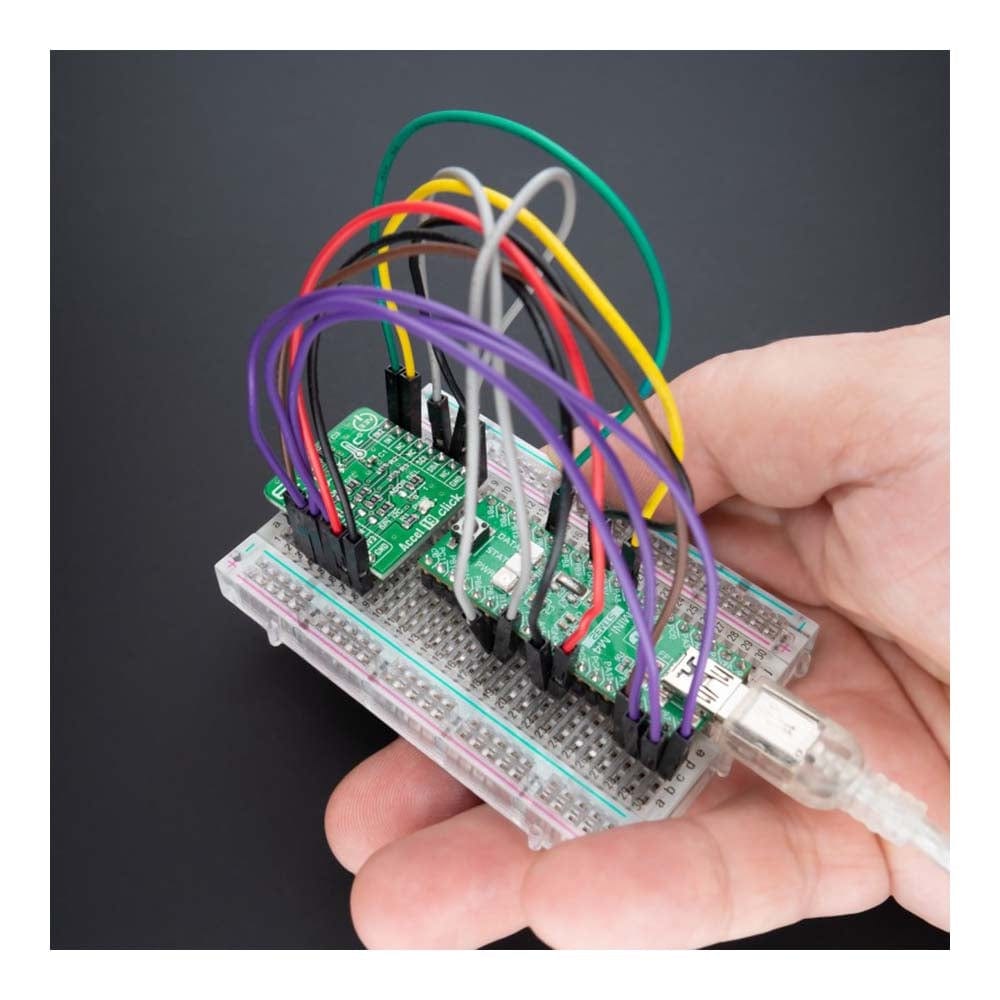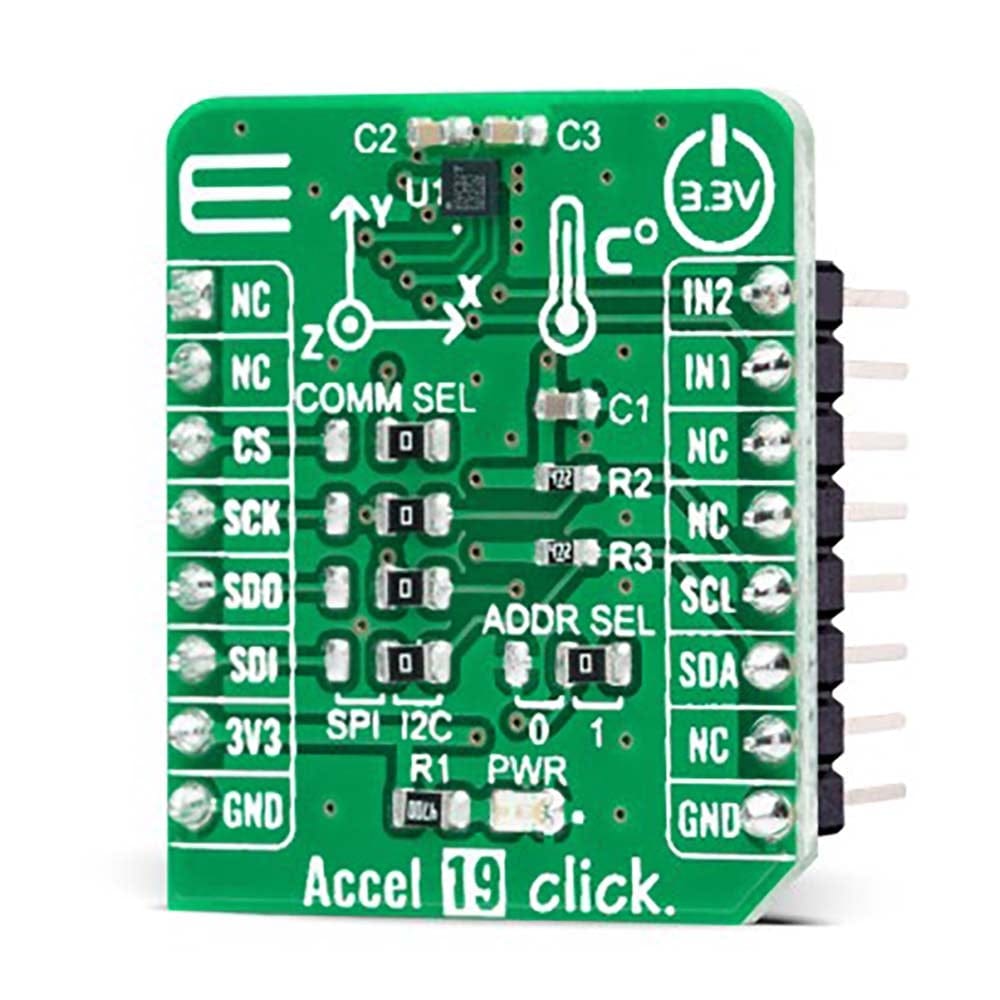
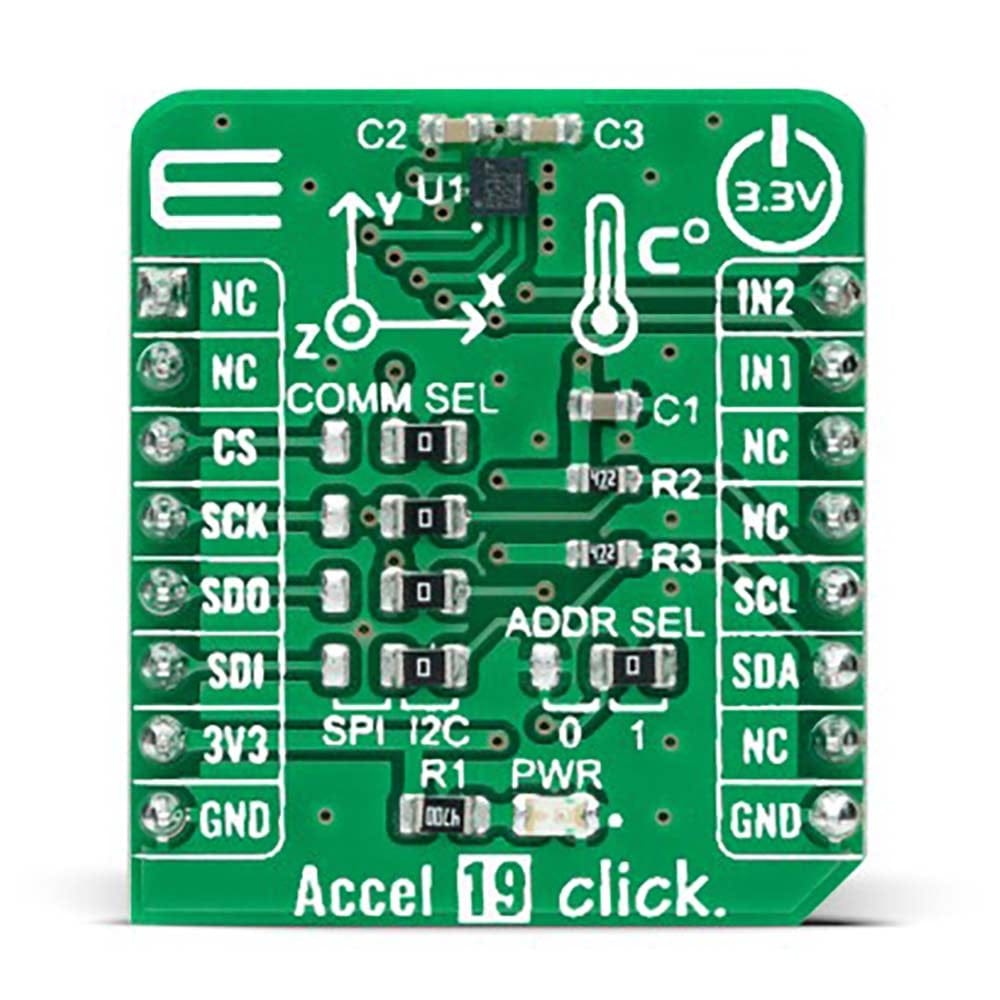
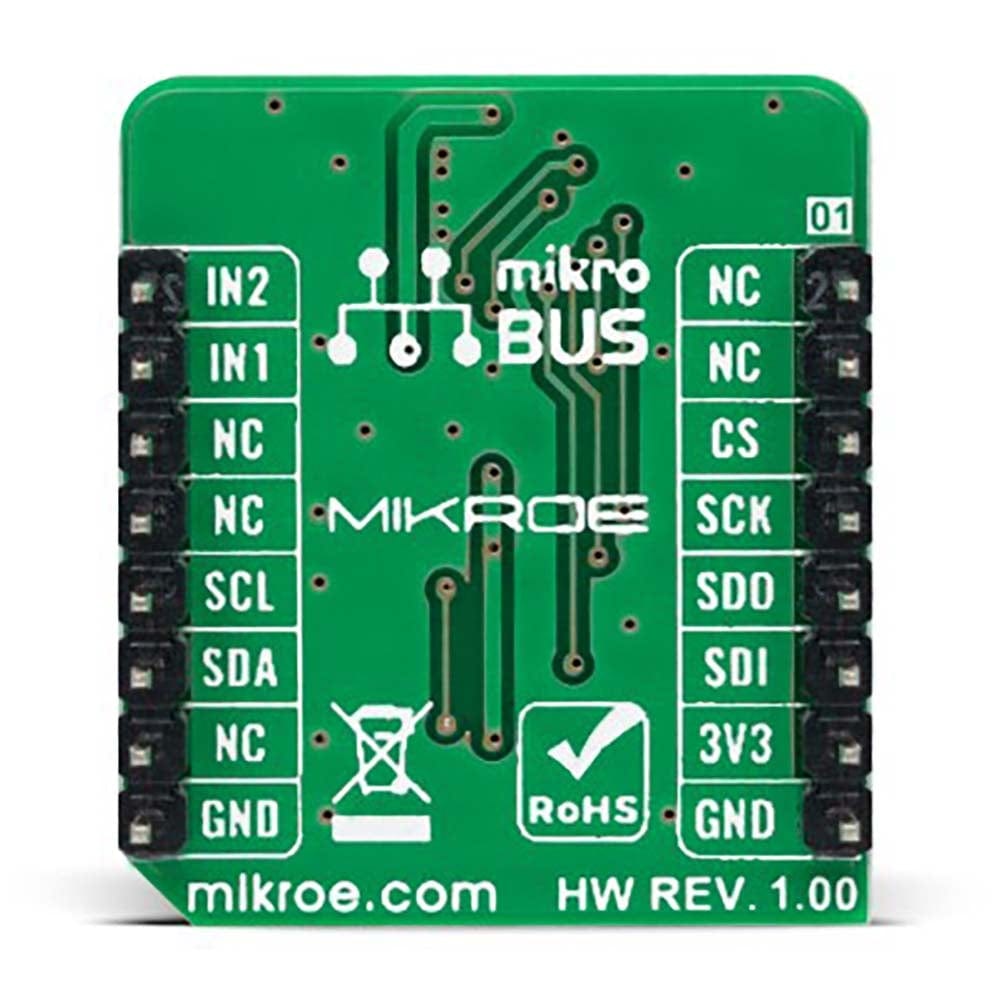
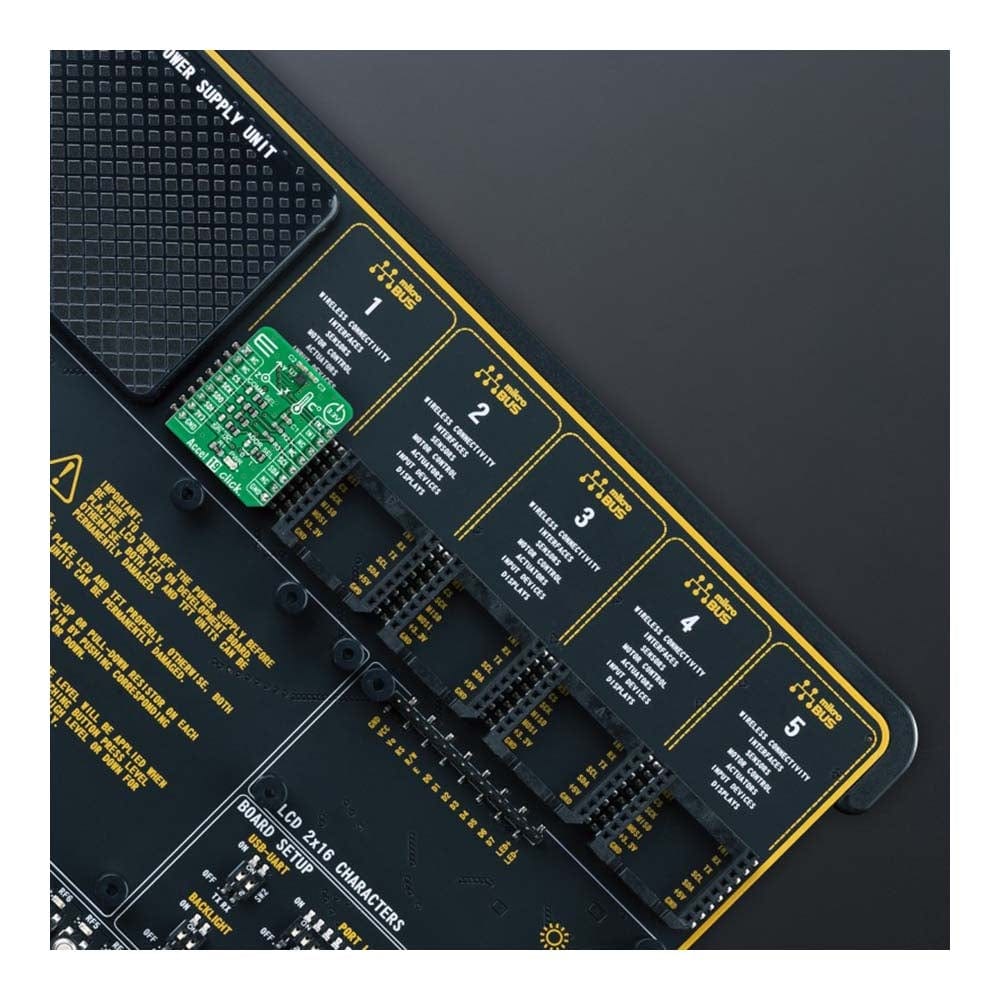
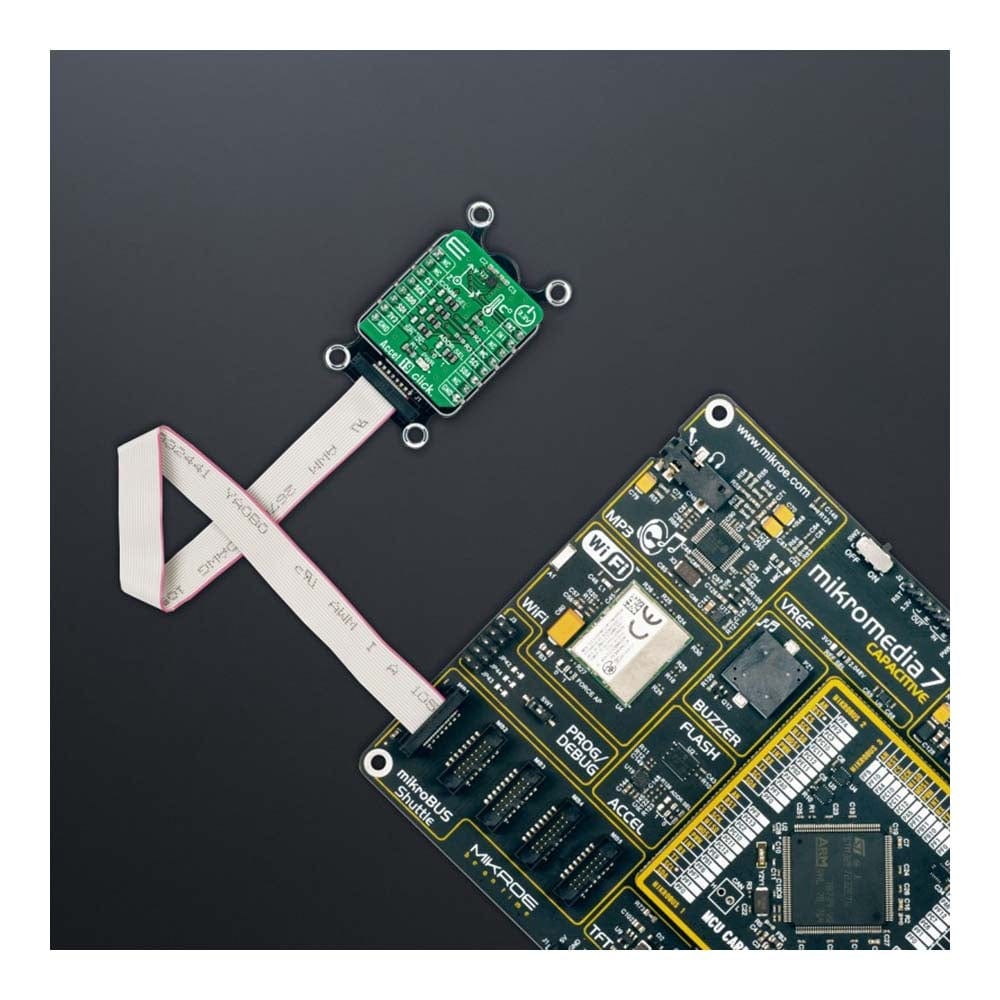
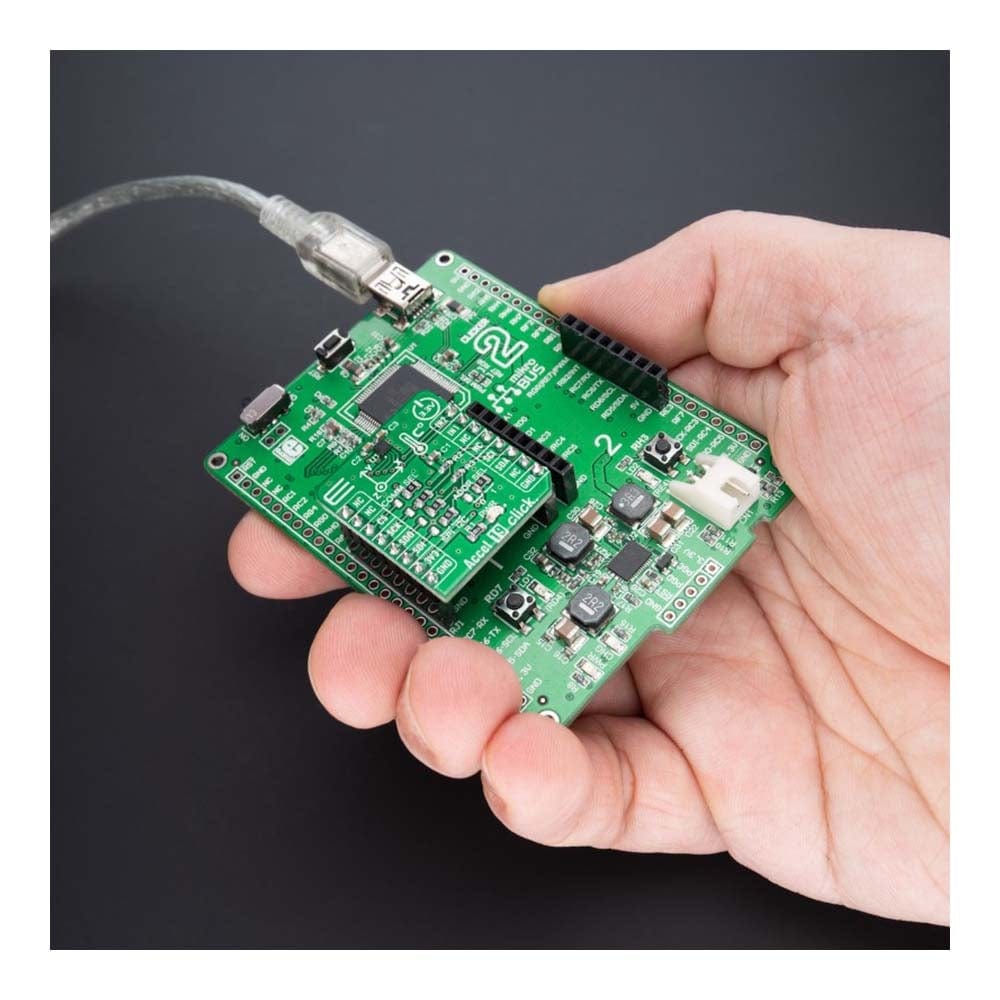
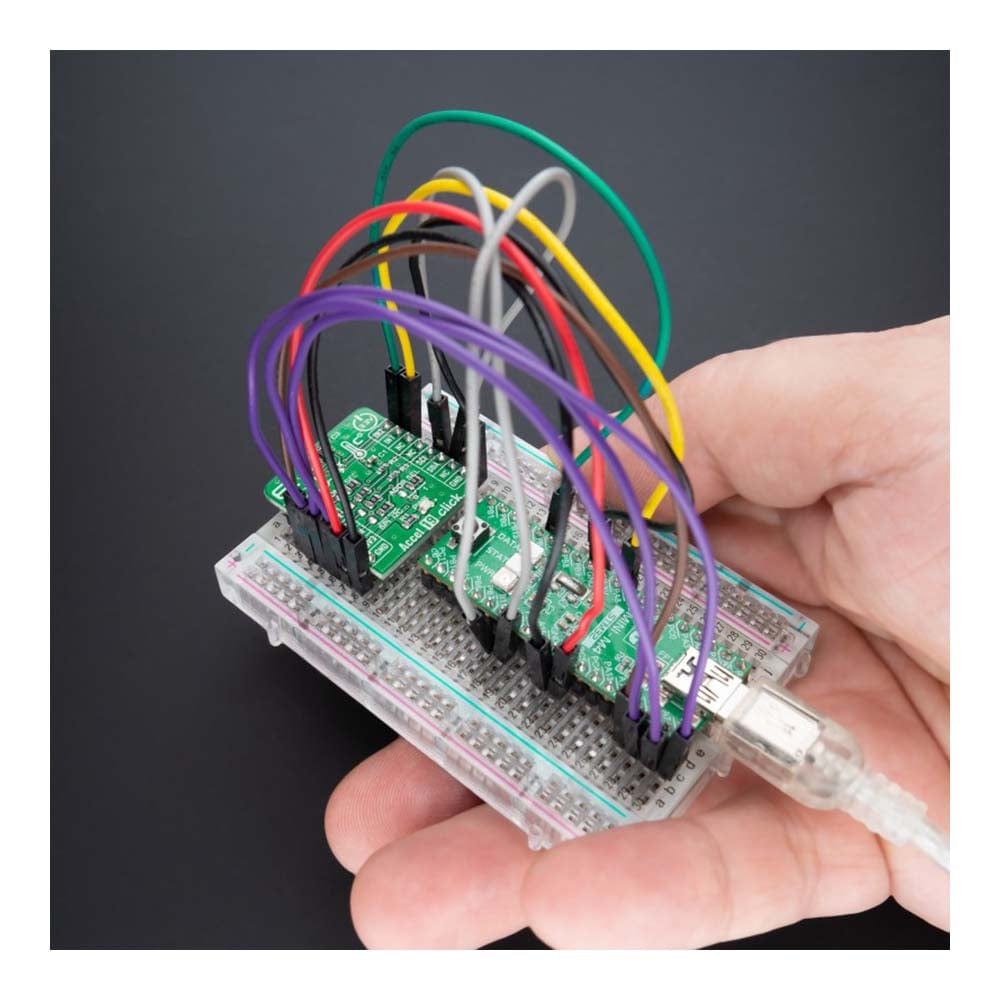
Overview
The Accel 19 Click Board™ is a compact add-on board that contains an acceleration sensor. This board features the LIS2DTW12, an ultra-low-power high-performance three-axis accelerometer from STMicroelectronics. It allows selectable full-scale acceleration measurements in ranges of ±2g, ±4g, ±8g, or ±16g in three axes with a configurable host interface that supports both SPI and I2C serial communication. Alongside an embedded 0.8°C accuracy temperature sensor with ODRs ranging from 50 to 1.6Hz and resolution from 8 to 12 bits, it has a dedicated internal engine to process motion and acceleration detection.
The Accel 19 Click Board™ is suitable for various applications such as motion-activated functions and user interfaces, tap-double-tap recognition, free-fall detection, tracking, and many more.
Downloads
Das Accel 19 Click Board™ ist eine kompakte Zusatzplatine, die einen Beschleunigungssensor enthält. Diese Platine verfügt über den LIS2DTW12, einen extrem stromsparenden Hochleistungs-Dreiachsen-Beschleunigungsmesser von STMicroelectronics. Er ermöglicht wählbare Vollskalen-Beschleunigungsmessungen in den Bereichen ±2 g, ±4 g, ±8 g oder ±16 g in drei Achsen mit einer konfigurierbaren Hostschnittstelle, die sowohl SPI- als auch I2C-Seriellkommunikation unterstützt. Neben einem eingebetteten Temperatursensor mit einer Genauigkeit von 0,8 °C mit ODRs von 50 bis 1,6 Hz und einer Auflösung von 8 bis 12 Bit verfügt er über eine dedizierte interne Engine zur Verarbeitung der Bewegungs- und Beschleunigungserkennung.
Das Accel 19 Click Board™ eignet sich für verschiedene Anwendungen wie bewegungsaktivierte Funktionen und Benutzeroberflächen, Tipp-/Doppeltipp-Erkennung, Freifallerkennung, Tracking und vieles mehr.
| General Information | |
|---|---|
Part Number (SKU) |
MIKROE-4949
|
Manufacturer |
|
| Physical and Mechanical | |
Weight |
0.02 kg
|
| Other | |
Country of Origin |
|
HS Code Customs Tariff code
|
|
EAN |
8606027389740
|
Warranty |
|
Frequently Asked Questions
Have a Question?
Be the first to ask a question about this.

